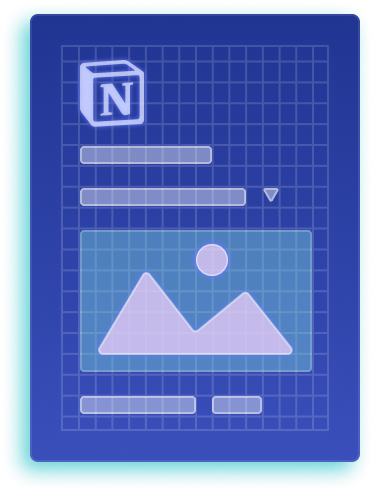Webflow Stripe Integration
Stripe is a payment gateway that enables secure and seamless payment processing directly on your website.

.svg)

.svg)


.svg)
About Stripe
Stripe is a prominent technology firm specializing in offering software and infrastructure solutions for online payment processing. Their services empower businesses of varying scales to efficiently accept and handle payments from customers worldwide.
Moreover, Stripe equips businesses with tools to manage subscriptions, invoices, fraud prevention, and other essential aspects of online commerce.
The company provides a diverse range of products and services to support developers, entrepreneurs, and platforms in establishing and expanding their online ventures.
Diffrenet Levels of Integrating Stripe with Webflow
The complexity of integrating Stripe goes from super-easy to extremely difficult. It all depends on what you intend to do with Stripe on your Webflow project. In this guide, we will only cover the easiest mode, as the more complex ones require coding. However, we will get you started on what your next steps should be if you want a complex Stripe integration with Webflow.
Basic Webflow Stripe Integration
The most basic level of integration is the plug-and-play approach, ideal for those with minimal or no coding skills.
In this method, users simply connect Stripe to their Webflow account using the platform's user-friendly interface.
This process involves signing up for Stripe and then linking it to Webflow through the ecommerce settings available in the Webflow Designer or Editor. This basic integration allows for standard payment functionalities such as processing one-time payments and managing basic recurring payments.
Webflow developer is not required.
- Best for — Small businesses, startups, or individual entrepreneurs who are just starting out with online sales.
- Project types — Simple ecommerce sites, personal or small business websites with basic selling features, or those transitioning to online sales with a limited number of products.
How to Connect Stripe and Webflow
Connecting Stripe to Webflow isn’t a difficult task, but you’ll still need a Webflow expert if you want to ensure seamless integration and avoid possible pitfalls.
Technically speaking, there are two methods to do it that don’t require third-party apps, such as Zapier. One is super-easy, the other one — not so much.
Here’s the easy method.
- Sign up to Stripe
- Go to Webflow Designer → Settings → Payments → Connect Stripe

You can also do the same using Webflow Editor by enabling checkout from the Ecommerce settings and then connecting Stripe.
However, this process if fairly limited, and bigger websites often need additional capabilities from Stripe. In that case, you’ll need to use some custom code. The following is a general outline of how to do it if you are going to rely on other capabilities by stripe, as describe in the sections below.
- Sign up for Stripe and head to the developers section on the site.
- Go to API keys, where you’ll see your publishable key and secret key. If these are not visible, you’ll have to generate them. These will let your Webflow and Stripe accounts communicate securely.
- Log in to your Webflow and go to Settings → Custom Code. To use this feature, you’ll need a paid ecommerce plan, as adding custom code is not available for free users.
- Add custom code to configure Stripe and connect it to Webflow. This is the part where you’ll require a professional developer’s assistance if you want to get the most out of this integration.
Moderate Webflow Stripe Integration: Low-Code
For those with a moderate level of technical knowledge, an intermediate level of integration offers more customization while still being relatively straightforward.
This level typically involves using Webflow’s Custom Code feature. Users can implement simple custom scripts or leverage APIs to enhance the checkout experience, such as adding custom payment options or basic automation features.
This level might also include the use of third-party plugins designed for Webflow, which provide extended functionalities with Stripe.
Webflow developer or a code-savvy person is required.
- Best for — Growing businesses or tech-savvy users who require more than just the basic functionalities but aren’t ready for a full-scale custom development.
- Project types — Online stores with specific needs like custom payment options, small to medium scale businesses looking to automate certain aspects of their ecommerce process, or those needing integration with specific third-party plugins.
Next steps:
- Find a Webflow developer – Locate a developer with a good grasp of Webflow’s Custom Code feature and basic API knowledge.
- Define requirements – Clearly specify your needs for custom payment options or automation features.
- Develop and test – The developer implements and tests custom scripts or API enhancements.
- Integrate and deploy – After testing, integrate the customizations with your Webflow site and connect it to Stripe.
Advanced Integration
Advanced integration is designed for users with a robust background in web development or access to professional developers.
This approach involves a deeper level of customization, utilizing advanced features of Stripe like Stripe Connect for marketplace capabilities, sophisticated subscription models, or intricate payment flows.
It often requires extensive use of Stripe’s API and Webhooks, along with implementing advanced security measures like 3D Secure.
This level is typically chosen by larger businesses or platforms that require a highly customized checkout experience or need to integrate Stripe with other complex systems.
Webflow development team required.
- Best for — Large businesses, ecommerce platforms, or users with access to professional development resources.
- Project types — Comprehensive online stores with complex requirements, businesses needing sophisticated subscription models, marketplaces, or sites requiring integration with multiple systems.
Next steps:
- Hire a Webflow agency – Engage a professional agency experienced in complex Webflow projects and Stripe’s advanced features.
- Plan in-depth – Collaborate with the agency to detail out sophisticated features like Stripe Connect or custom payment flows.
- Custom development – The agency undertakes extensive coding, including API and webhook integration.
- Test and launch – Conduct thorough testing before launching the integration on your site.
Enterprise-Level Stripe Integration
At the enterprise level, the integration becomes a comprehensive, complex task, usually undertaken by large-scale businesses with unique and specific requirements.
This involves a dedicated team of developers and might entail integrating Stripe with multiple systems beyond Webflow, such as inventory management systems, CRM platforms, or advanced analytics tools.
Enterprise-level integration often demands adherence to various regulatory standards and the capability to handle a high volume of transactions securely and efficiently.
Enterprise Webflow development team required.
- Best for — Large-scale enterprises or corporations with specific, high-level requirements and a focus on scalability and security.
- Project types — Major ecommerce operations, international sales platforms, businesses requiring integration with a wide array of systems (like CRM, inventory management, advanced analytics), and operations needing to comply with stringent regulatory standards.
Next steps:
- Engage an Enterprise Webflow Team – Partner with an agency specialized in large-scale Webflow projects and knowledgeable about Stripe at an enterprise level.
- Strategic planning – Undertake extensive planning and consultation to define scope and integration with systems like CRM and inventory management.
- Custom development and integration – The team builds and integrates a highly customized solution.
- Rigorous testing and implementation – Perform exhaustive testing and implement the integration, with ongoing support from the team.
{{cta}}
Why Connect Webflow and Stripe
Here are a few reasons why many Webflow users choose to connect Stripe as their payment processor.
- Security and ease of use — Connect Webflow and Stripe to enable seamless and secure online payment processing for Webflow-based websites.
- Potent infrastructure — Integrate Stripe's robust payment infrastructure into Webflow, allowing businesses to accept customer payments globally.
- Fraud prevention — Use Stripe's fraud prevention tools to ensure secure transactions and protect merchants and customers.
- Customizability — Leverage Stripe's extensive documentation and developer tools to customize payment flows and enhance the user experience.
- Compatibility with Webflow — Simplify the setup process with Webflow's pre-built integration options for Stripe, reducing development time and effort.
- Support for several payment options — Utilize Stripe's support for multiple payment methods, accommodating various customer preferences and increasing conversion rates.
- International features — Benefit from Stripe's international capabilities, allowing businesses to accept payments in different currencies and expand their global reach.
Common Challenges When Integrating Stripe and Webflow
Even though Stripe is seamlessly integrated with Webflow, some issues may occur.
- No test mode — The integration between Webflow and Stripe lacks a test mode, which hinders the ability to conduct trial transactions using dummy credit card numbers provided by Stripe for testing purposes.
- Lack of proper onboarding assistance — Users connecting Stripe to Webflow's eCommerce platform do not receive onboarding assistance, a crucial step that can streamline the setup process and ensure a smooth integration experience.
- Ongoing issues might occur and need to be addressed — Other occasional issues may occur when trying to connect your Stripe account to Webflow, which may need you to contact customer support for assistance.
- Coding skills required — You’ll need coding knowledge if you want to use Stripe beyond the simple checkout process when using Webflow.
Stripe vs PayPal — Which Is Better for Webflow Integration?
Stripe and PayPal are the two most popular payment integrations for Webflow. If you’re interested in using PayPal, check out our PayPal Webflow integration guide.
But before that, here’s a quick comparison of the two tools.
- Ease of integration — Stripe offers a more straightforward integration with Webflow, allowing for seamless connection and advanced customization through coding. PayPal, while also integrable with Webflow, might require more complex steps or third-party tools for advanced features.
- Feature set — Stripe excels with a comprehensive feature set, including various payment methods, subscription billing, and advanced fraud protection. PayPal is recognized for its strong consumer trust and simple payment processing, but it may lack the extensive customization options of Stripe.
- User experience — Stripe provides a cohesive user experience by integrating its checkout process directly into the Webflow site. PayPal, on the other hand, redirects users to its platform for payment, which can disrupt the user experience but benefits from high consumer recognition.
- Transaction fees and pricing — Both Stripe and PayPal have similar pricing models, usually a percentage of the transaction plus a fixed fee. Specific rates can vary based on location and transaction type.
- Global reach and currency support — Stripe supports many countries and currencies, suitable for international businesses, while PayPal is renowned for its global reach and is a preferred option for international transactions.
Webflow Requirements
You’ll need a paid ecommerce Webflow plan if you want to perform a Stripe Webflow integration.
{{cta}}





The 2025 Playbook for Website Customer Acquisition
.png)

.png)

in mind?
Talk with our team and learn how your ideas can become digital experiences.
Your go-to Webflow
resources library
Webflow projects where we made Stripe integration
Explore the projects where we integrated Stripe with Webflow.
Check Other Webflow integrations
Browse other popular integrations
We get asked these questions often
Does Webflow integrate with Stripe?
Yes, it does. Stripe is actually one of the few payment processors that can be easily connected with Webflow to kickstart the checkout process for users.
How to integrate Stripe and Webflow?
Webflow Stripe integration is quite easy, just go to your ecommerce settings in Designer and connect Stripe.
Can Flow Ninja integrate Stripe with Webflow?
Yes, we can help you with any form of Webflow Stripe integration. Feel free to contact us and see how we can assist you.
Can I integrate other payment methods with Webflow?
Besides Stripe, which supports a range of payment options, you can also integrate Webflow with PayPal.
.svg)

.png)
.png)



%201.png)
.svg)
.svg)
.webp)
.svg)





